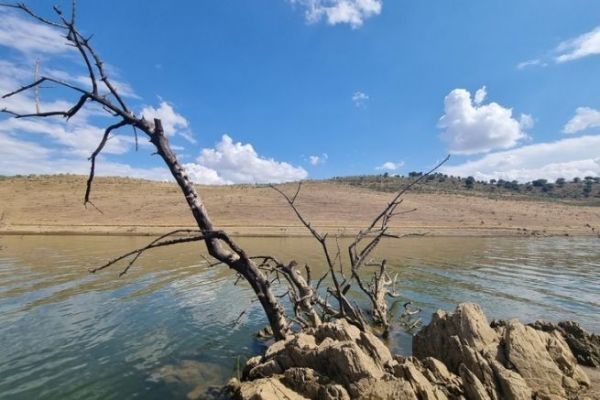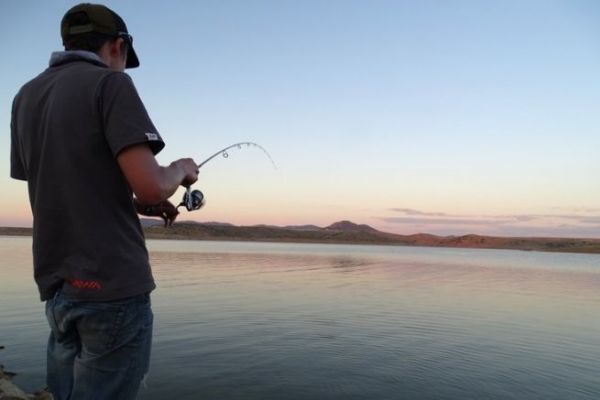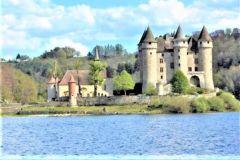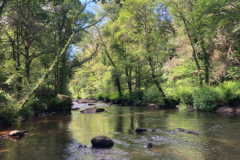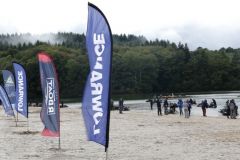Less than ideal weather
In previous years, we usually chose April/May for our trip, to take advantage of the cool waters along the banks. However, in this year of 2023, we chose June, which is ideal for hot weather and barbel activity on the surface. Unfortunately, it was the rainiest June in years, so the water in the Serena was unseasonably cold.
This really didn't help the fish to come and feed in little water, and the cloud cover greatly reduced the effectiveness of sight-fishing. Fortunately, some days were sunny, albeit infrequently, which enabled me to make some nice catches. My best day ended with 9 barbel and 5 carp on streamers and dries, all sight-fished in less than 50 cm of water.

A considerable water shortage
Although the rain had set in well during our stay and in the weeks leading up to it, the level of Lake Serena was constantly dropping. In just two weeks, the lake has dropped more than 1 metre in height, over an absolutely gigantic surface area, representing millions of cubic metres of water. The lake is currently at around 15% of its maximum capacity, and falling further and further. It now seems unthinkable that it will fill up again in the foreseeable future, so water-hungry is the surrounding agriculture.
It's the only region I know of that is permanently in drought, but has thousands of hectares of rice fields... Lac de la Serena is the lowest in percentage of the 5 major lakes in the region, despite being the largest. The future is far from bright for this lake, and the constantly falling water level must surely have had an impact on the northern pike population that existed just 8 years ago.

How are the fish doing?
As far as we could see, the whitefish population is as large as ever. Carp are so numerous that they are affected by dwarfism, and fish weighing over 2 kg are extremely rare. Schools of hundreds of kilo fish are present throughout the lake. Pike and black bass are totally invisible when fished from shore, which doesn't bode well for the future.
However, the barbel population is doing rather well, with larger individuals becoming more numerous and juveniles being spotted, indicating good reproduction. The low level of the lake concentrates the fish more, allowing us to see a good number of them.

 /
/ 